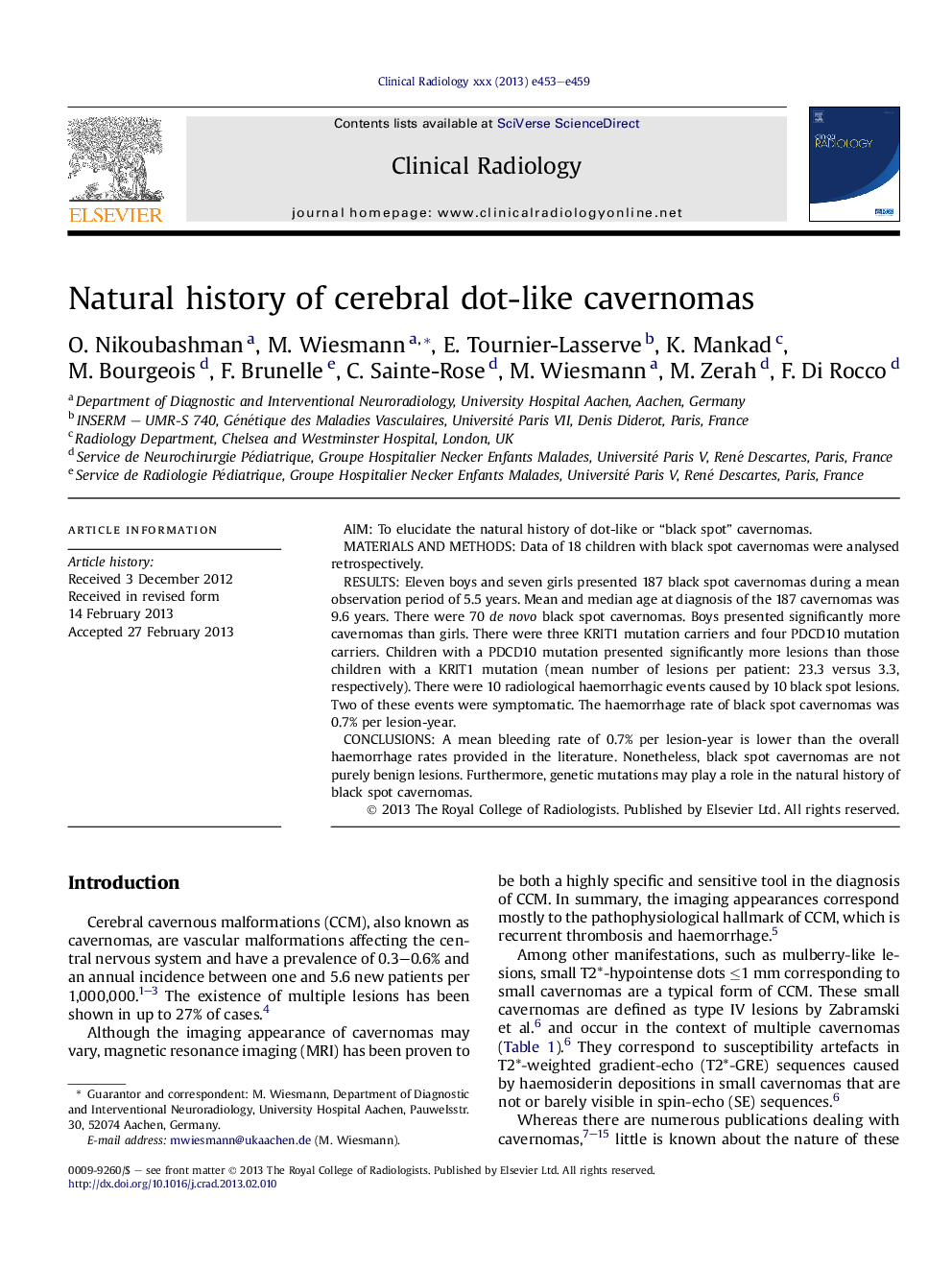| Article ID | Journal | Published Year | Pages | File Type |
|---|---|---|---|---|
| 6190917 | Clinical Radiology | 2013 | 7 Pages |
AimTo elucidate the natural history of dot-like or “black spot” cavernomas.Materials and methodsData of 18 children with black spot cavernomas were analysed retrospectively.ResultsEleven boys and seven girls presented 187 black spot cavernomas during a mean observation period of 5.5 years. Mean and median age at diagnosis of the 187 cavernomas was 9.6 years. There were 70 de novo black spot cavernomas. Boys presented significantly more cavernomas than girls. There were three KRIT1 mutation carriers and four PDCD10 mutation carriers. Children with a PDCD10 mutation presented significantly more lesions than those children with a KRIT1 mutation (mean number of lesions per patient: 23.3 versus 3.3, respectively). There were 10 radiological haemorrhagic events caused by 10 black spot lesions. Two of these events were symptomatic. The haemorrhage rate of black spot cavernomas was 0.7% per lesion-year.ConclusionsA mean bleeding rate of 0.7% per lesion-year is lower than the overall haemorrhage rates provided in the literature. Nonetheless, black spot cavernomas are not purely benign lesions. Furthermore, genetic mutations may play a role in the natural history of black spot cavernomas.
